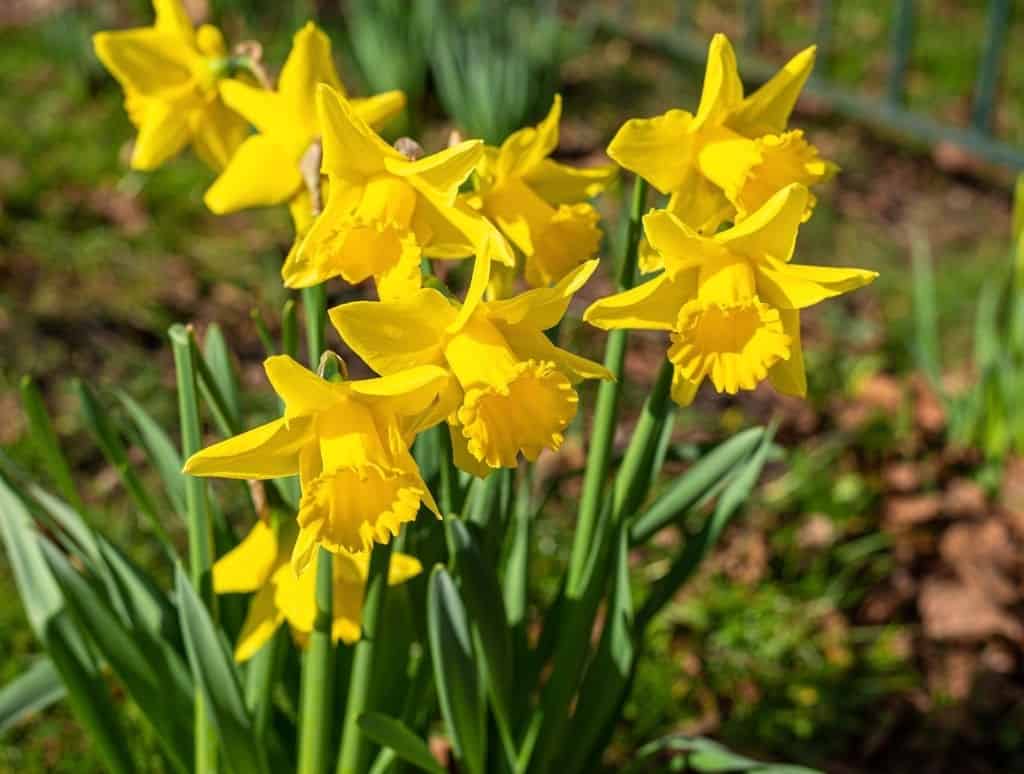Daffodils are beautiful flowers, with many of them blooming once spring arrives! A lot of people love to plant daffodils in their garden to welcome the spring and have their place look colorful and amazing. That’s why it does feel disappointing when you don’t see daffodils blooming when spring comes, even when you’ve planted them a long time ago and it’s grown leaves!
Why aren’t they flowering? There are several reasons why so read on to find out and what to do when daffodils stop blooming.

Why Daffodils Stop Blooming
There are several reasons why your daffodils stopped blooming, or haven’t begun blooming “on time:”
Blind Daffodils
Only a few plants survive on their own for a long period. Daffodils that don’t bloom anymore are called “blind,” producing many leaves without any flowers.
If daffodils become too dry after flowering and before its leaves have yellowed, dying back, then it can impair the flower bud formation during the next season. It may also be due to cutting off its foliage after flowering, which prevents plants from photosynthesizing, making new buds, and/or bulbs. Knotting leaves can also cause it to stop blooming.
The Planting Depth
When plants are planted at the wrong depth, it affects their growth and blooming. When too shallow, they dry out and die. If planted too deeply, it would be slow to emerge and have a difficult time getting the nutrients it needs.
Impatience
You might have cut back on its foliage too soon, cutting them before they browned by themselves. When you cut it too early, the bulbs can’t store enough food to survive throughout the summer and winter seasons.
The Food
Daffodil bulbs store their food but still require nutrients from the soil so it can continue building its reserves. Without it, they are less likely to survive and bloom. When you have very lean soil, the bulbs, especially those still developing, will require a boost after it flowers.
Furthermore, too much or too little of the daffodils’ requirements may end up with it not blooming. If daffodils receive too much nitrogen, shade, or high heat, or if they lack moisture, they end up not blooming during the growing season as expected.
Narcissus Flies
These are pests that would eat flower buds, with adult flies crawling down to the soil, laying eggs. When the larvae hatch, it would feed on buds, causing it to stop flowering.
Crowded
When you overcrowd your daffodil plants, a lot of them would compete for very few nutrients, and it results in them clumping, left to naturalize in woodland or lawn. It may even cause daffodils to wilt and die due to malnutrition!
What to Do When Daffodils Stop Blooming
Now that you know why your daffodils may not be blooming, what can you do to remedy the problem? Here are some methods you can follow:
Give Them Proper Nutrients
Make sure that you do NOT mow your daffodils until the leaves are yellowing on its own. Also, take off flower heads once they are gone over as well. You may remove any faded flowers for aesthetic purposes, but never remove the foliage until it loosens and withers on its own.
If your bulbs were planted too shallow, then replant them about 4-6 inches deep, depending on the bulb size (it should be four times its height).
You should also give your soil proper nutrients by feeding it with slow-release fertilizer, then mulch it with high-quality and peat-free compost. Provide it with adequate food, water, nitrogen, and light, planting it in an area with suitable temperature conditions. Prune your daffodil plants and lower branches from the trees to provide plants with more sun and feed the bulbs with high-phosphorous formula if it has too much nitrogen.
You don’t need to give it supplemental water before fall unless there is a drought or the bulbs grow within the vicinity of trees, since these would steal moisture and food from the flowers.
Do Not Overcrowd Daffodils
Lift and divide daffodils, or when seeding them, make sure they have space between each plant to give them enough nutrients.
When the foliage has withered, split up the clumps and replant individual daffodil bulbs around six inches apart and six inches deep. Let it grow on its own and provide supplemental water starting the fall season.
You should do this after improving your soil with fresh compost and slow-release fertilizer, as well as after cleaning your bulbs from soil and loose scales. You can store them over the summer first, placing it in a cool and dark area away from pests.
Get It Away from Pests
Unfortunately, if your daffodils have become victim to pests like the narcissus eelworm or bulb fly, there is no cure. The same goes for daffodils that have succumbed to diseases. If this happens, lift the daffodil bulbs and cut them in half, checking for any larvae or other pests. If you see that the scales have browned and soft, it’s time to dig them, as well as all the other bulbs within one meter from one another.
Destroy all the bulbs, burning or throwing it properly. Do NOT add them into the compost, as this would have pests and fungi grow around the new plants.
Do you want to learn more about caring for your daffodils efficiently to help it bloom gorgeously? This informative video can help you out:
Wrapping It Up
If your daffodils aren’t blooming, you aren’t alone! Many people also have a similar problem, but not to worry. Once you know the cause, you will know what method to use to help your daffodils begin blooming once spring comes.
I hope that this article on what to do when daffodils stop blooming helped you find an effective solution. Take a look at your daffodils and find out the cause of the problem to know how you can remedy it for beautiful blooms now.